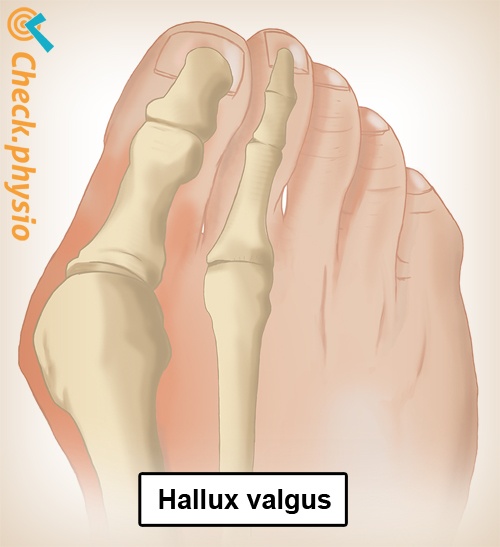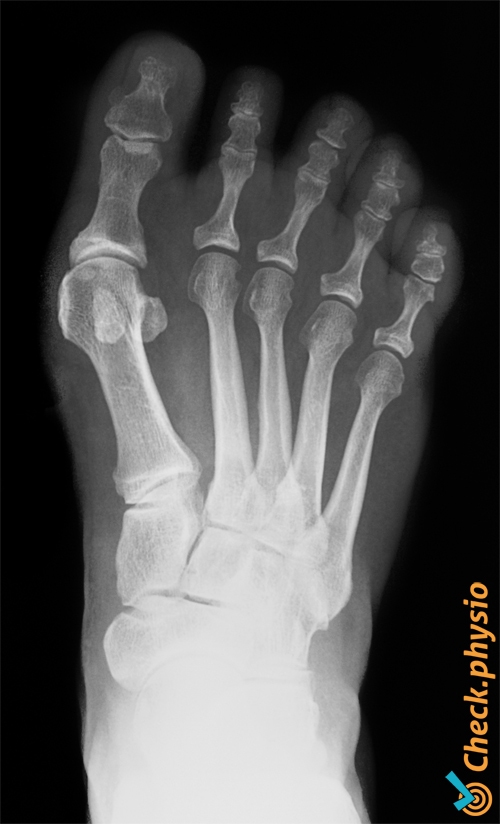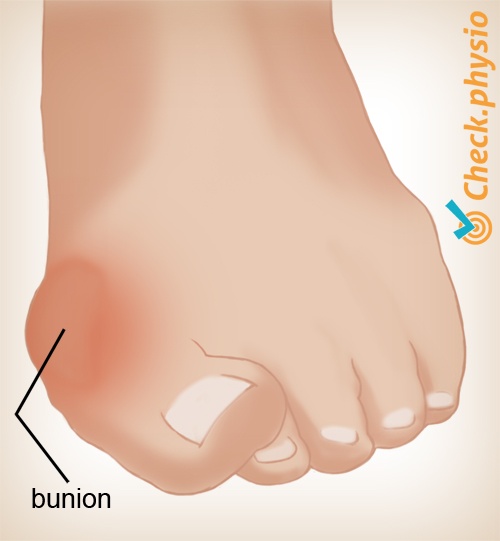- Conditions
- Hallux valgus (bunion)
Hallux valgus (bunion) Abnormal position of the big toe
Introduction
A hallux valgus is a very common condition. It involves an abnormal position of the big toe. In addition to the fact that this can be troublesome and painful, some patients also find it unsightly.
An estimated 33% of all adults have a hallux valgus position abnormality to a certain extent. It is more common in women than in men.

Description of condition
Hallux valgus is a condition that involves the big toe bending toward the other toes. The metatarsal bone that is located just before the big toe is rotated in the other direction (outward). This results in a lump on the outside of the big toe. This is called a "bunion".
Cause and history
It is not entirely clear exactly how hallux valgus develops. It can be the result of a congenital abnormality in the foot, hypermobility of the joints and excessive inward sagging of the foot. Tight, narrow shoes or shoes with high heels appear to increase the risk of developing a hallux valgus.
It is more common in some families. In addition, hallux valgus is more common with diseases that cause inflammation of the joints, such as rheumatoid arthritis.
Signs & symptoms
- Pain or difficulty walking.
- The pain is usually located along the side of the big toe.
- The big toe is bent inward (toward the other toes).
- There is a painful lump at the base of the big toe that protrudes slightly (bunion). This lump may be inflamed and become red and swollen.
- Some patients have trouble finding shoes that fit.
- Narrow, pointed shoes and shoes with high heels make the pain worse.
Diagnosis
To diagnose hallux valgus, the healthcare professional will ask about the complaints and how they have developed. In cases of a more advanced hallux valgus, diagnosis is not difficult. The big toe will already be pointing inward and a painful bump is present.
Treatment and recovery
Treatment is usually conservative. This means that the patient will be given the advice to wear wider shoes with low heels. Foot exercises can preserve joint mobility. Insoles or a night-time splint can combat the skewed position.
A surgical procedure may be considered if the condition causes severe pain or nuisance. Various techniques are used, which generally yield good results.
More info
You can check your symptoms using the online physiotherapy check or make an appointment with a physiotherapy practice in your locality.
References
Verhaar, J.A.N. & Linden, A.J. van der (2005) Orthopedie Houten: Bohn Stafleu van Loghum.
Barg, E.C., Eekhof, J.A.H. & Knuistingh Neven, A. (2008) Hallux valgus Kleine kwaal. Huisarts & Wetenschap. Feb; 51(2):96-98.


